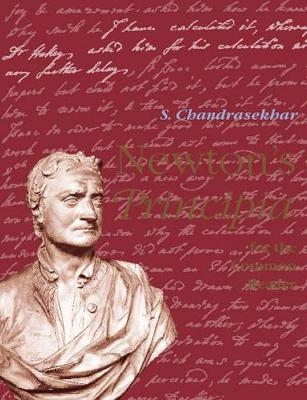
Newton's Principia for the Common Reader
Oxford University Press (Verlag)
978-0-19-852675-9 (ISBN)
Newton's Philosophiae Naturalis Principia Mathematica provides a coherent and deductive presentation of his discovery of the universal law of gravitation. It is very much more than a demonstration that 'to us it is enough that gravity really does exist and act according to the laws which we have explained and abundantly serves to account for all the motions of the celestial bodies and the sea'. It is important to us as a model of all mathematical physics.
Representing a decade's work from a distinguished physicist, this is the first comprehensive analysis of Newton's Principia without recourse to secondary sources. Professor Chandrasekhar analyses some 150 propositions which form a direct chain leading to Newton's formulation of his universal law of gravitation. In each case, Newton's proofs are arranged in a linear sequence of equations and arguments, avoiding the need to unravel the necessarily convoluted style of Newton's connected prose. In almost every case, a modern version of the proofs is given to bring into sharp focus the beauty, clarity, and breath-taking economy of Newton's methods.
Subrahmanyan Chandrasekhar is one of the most reknowned scientists of the twentieth century, whose career spanned over 60 years. Born in India, educated at the University of Cambridge in England, he served as Emeritus Morton D. Hull Distinguished Service Professor of Theoretical Astrophysics at the University of Chicago, where he has was based from 1937 until his death in 1996. His early research into the evolution of stars is now a cornerstone of modern astrophysics, and earned him the Nobel Prize for Physics in 1983. Later work into gravitational interactions between stars, the properties of fluids, magnetic fields, equilibrium ellipsoids, and black holes has earned him awards throughout the world, including the Gold Medal from the Royal Astronomical Society in London (1953), the National Medal of Science in the United States (1966), and the Copley Medal from the Royal Society (1984). His many publications include Radiative transfer (1950), Hydrodynamic and hydromagnetic stability (1961), and The mathematical theory of black holes (1983), each being praised for its breadth and clarity. Newton's Principia for the common reader is the result of Professor Chandrasekhar's profound admiration for a scientist whose work he believed is unsurpassed, and unsurpassable.
deceased
Prologue ; 1. The beginnings and the writing of the Principia ; 2. Basic concepts: definition and axioms ; 3. On the notion of limits and the ratios of evanescent quantities ; 4. On the motion of particles under centripetal attraction: an introduction to Newton's treatment ; 5. The law of areas and some relations which follow ; 6. The motion of bodies along conic sections ; 7. Kepler's equation and its solution ; 8. The rectilinear ascent and descent of bodies ; 9. The conservation of energy and the initial value problem ; 10. On revolving orbits ; 11. A pause ; 12. The two-body problem ; 13. The method of the variations of the elements of a Kepler orbit and Newton's lunar theory: an introduction to propositions LXV-LXIX ; 14. The three body problem: the foundations of Newton's lunar theory ; 15. The superb theorems ; 16. Attraction by non-spherical bodies ; 17. A digression into Opticks ; 18. Prolegomenon ; 19. The universal law of gravitation ; 20. The figure of the earth and of the planets ; 21. On the theory of tides ; 22. The lunar theory ; 23. The precession of the equinoxes ; 24. On the comets ; 25. The effect of air-drag on the descent of bodies ; 26. The solid of least resistance ; 27. The problem of the brachistochrone ; 28. The velocity of sound and long waves in canals
| Erscheint lt. Verlag | 1.5.2003 |
|---|---|
| Zusatzinfo | numerous line figures, frontispiece |
| Verlagsort | Oxford |
| Sprache | englisch |
| Maße | 165 x 250 mm |
| Gewicht | 1275 g |
| Themenwelt | Mathematik / Informatik ► Mathematik ► Allgemeines / Lexika |
| Mathematik / Informatik ► Mathematik ► Geschichte der Mathematik | |
| Naturwissenschaften ► Physik / Astronomie ► Mechanik | |
| Naturwissenschaften ► Physik / Astronomie ► Relativitätstheorie | |
| ISBN-10 | 0-19-852675-X / 019852675X |
| ISBN-13 | 978-0-19-852675-9 / 9780198526759 |
| Zustand | Neuware |
| Haben Sie eine Frage zum Produkt? |
aus dem Bereich


